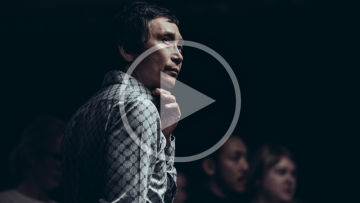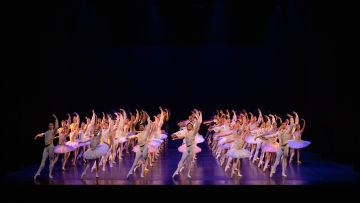The music of Dracula
Every good love story needs a soundtrack to match, and Dracula’s unbridled, dark and intensely passionate love affair is taken to even greater heights with Polish film composer Wojciech Kilar’s exhilarating score.

Bram Stoker’s original 1897 tale of Dracula became a cult cinematic masterpiece when American film director, Francis Ford Coppola, reimagined the story for the big screen in 1992. With a star-studded cast featuring the likes of Winona Ryder, Keanu Reeves, Anthony Hopkins and Gary Oldman, the film reinforced Dracula’s inspiration and influence over the entire gothic genre we know today.
Kilar was enlisted by Coppola to bring a classical eastern European flare to the film score, with free reign to compose without limitations. The result was glorious, a score that perfectly envisioned the ravenous Count Dracula’s reign of terror entwined with his delicate love story with Mina. When Queensland Ballet brings Dracula to the stage this November, the music will highlight some of Kilar’s best scores, from not only his 1992 cinematic soundtrack Dracula, but his other film and symphonic works.
Audiences will be spellbound from the moment the curtain rises. Kilar’s The Beginning from the 1992 film transcends the ballet into the otherworldly, with the ominous lower register of the strings brewing a foreboding presence. Disquieting choral voices can be heard expressing sorrowful wailing and an unabiding sadness as Count Dracula longs to be reunited with his one true love. It’s incredibly atmospheric, raising the tension and holding it there suspended as Dracula emerges from the dark shadows.
The interspersed selection of Kilar’s cinematic and symphonic works will take audiences on a journey, traversing time and place. The dissonant and abrasive timbre of Kilar’s Kościelec 1909 sets the tone for the gothic fortresses of Transylvania, while his illuminating Grande Valse from his cinematic score for The Leper exudes the opulent feel of London’s grandest ballrooms.
“It’s deeply cinematic in its atmosphere,” says Queensland Ballet Music Director and Principal Conductor Nigel Gaynor.
“The common element throughout Kilar’s music for Dracula is that it’s incredibly constrained and measured, creating a sense of claustrophobia, and if it does progress, it’s slow and deliberate. A hypnotic power permeates throughout, raising the question of what is real and what is imagined. It complements the idea that Count Dracula has this supernatural hold over people, luring them in and not letting go.”
But this is a love story, don’t forget, and other symphonic and film work from Kilar’s repertoire have been masterfully blended in, creating lush romantic moments as Dracula’s dark romance unravels.
“I think audiences will be surprised by how romantic the music becomes, especially the Pas de Deux, where we hear an incredibly sweet but rich sound from the strings,” says Nigel.
“In Kilar’s score, there is this real sense of eternality. At its core, this is a story about Dracula’s enduring love for his wife Elizabeth, a love that has traversed centuries, and the sacrifices he is willing to make to reunite with her.”
“People may hesitate to see a gothic tale with a bit of bite, but the central point for this story is love, and the choreography, sets, costumes and beautiful live music with Camerata – Queensland’s Chamber Orchestra, will make for a sublime night at the ballet.”
WOJCIECH KILAR’S DRACULA LISTENING GUIDE:
The Beginning from the movie Bram Stoker’s The Dracula
Kościelec 1909
Grande Valse from the movie The Leper
The Brides from the movie Bram Stoker’s The Dracula
Valse Romantique from the movie The Promised Land
2nd Movement from Symphony No.5 “Advent”
The Storm from the movie Bram Stoker’s The Dracula
Words by Ellen Gilroy
Photo credit: Senior Soloist Mia Heathcote and Principal Artist Joel Woellner by Tamara Zurvas



